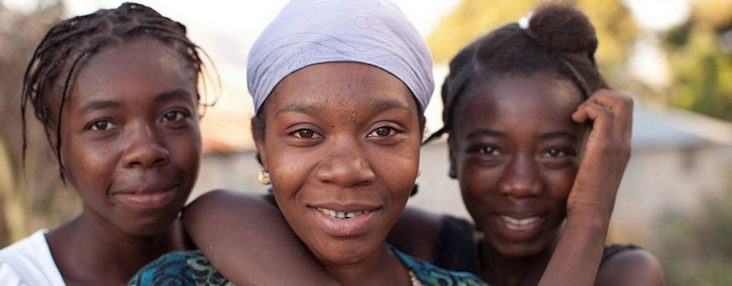Research shows Heifer International ‘cow’ program does make a difference
by September 18, 2016 8:55 am 903 views

Can Heifer International’s gift of a cow really change a life? Yes, say two professors who studied the model in Zambia and found that families receiving livestock doubled their daily income while nearby families didn’t change theirs much.
Alex Winter-Nelson and Peter Goldsmith with the University of Illinois Urbana-Champagne traveled to Zambia’s Copperbelt Province and then reported on their work during an address at the Clinton School of Public Service Thursday.
Winter-Nelson said the poor are kept poor by “poverty traps” from which they can escape only after they have achieved a threshold of assets. That means a gift of an asset can help them take that first step. That gift needs to be productive and accompanied by something else such as training. It’s good if it can produce positive spillover in the community and if it can result in other tangible benefits such as giving women more power over decisions.
Little Rock-based Heifer International, which provides livestock to poor families, would seem to fulfill all of those requirements, but Winter-Nelson and Goldsmith wanted to prove it, so they traveled to Zambia’s Copperbelt Province, once home to a mining industry and now home to widespread poverty. There they discovered Mama Jele, who 15 years ago was destitute, recently widowed, and raising grandchildren because her two daughters had died of AIDS. After learning of Heifer International, she and other women in the community formed a cooperative and were given indigenous cattle. It turned out that she was good at managing livestock and running a business and now manages a large herd, a large dairy cooperative, and has become the first female board member of a powerful national farmers’ union.
She credits Heifer International for her success, but the researchers wondered if perhaps it was her own ability that was responsible, so they compared five communities – one where villagers received dairy cows in January 2012, one where they received goats, one where they received draft livestock, and two where villagers had requested livestock but had not yet received it.
Within six-12 months after receiving an animal, households had experienced a 25% growth in the amount they could spend per day compared to those that had not received an animal. Their income had risen from about $1 to more than $1.25 a day. Those that received a dairy cow had milk every day rather than twice a week, while those receiving draft cattle or goats increased their milk consumption to three times a week. Thirty-six months after receiving the livestock, income had doubled to $2 a day, and recipients were 48% less likely to be in poverty after 42 months.
Meanwhile, others in the community saw a benefit because of the increased milk production, and there were no problems with water or crop damage. The researchers asked villagers 55 questions to determine how the livestock had changed the way decisions were made in the household. They found a decline in the number of decisions made by either men or women with more shared decisions between them.
Winter-Nelson painted a hopeful picture of global poverty as a whole. In 1990, 40% of the world’s population lived on less than the equivalent of $1.90 a day. Today, it’s 10%. Since 1990, the total number has declined 200 million. Still, 750 million live on less than $1 a day.
Winter-Nelson said improving those rates produces trading partners for the United States and reduces political stability, which improves security.
